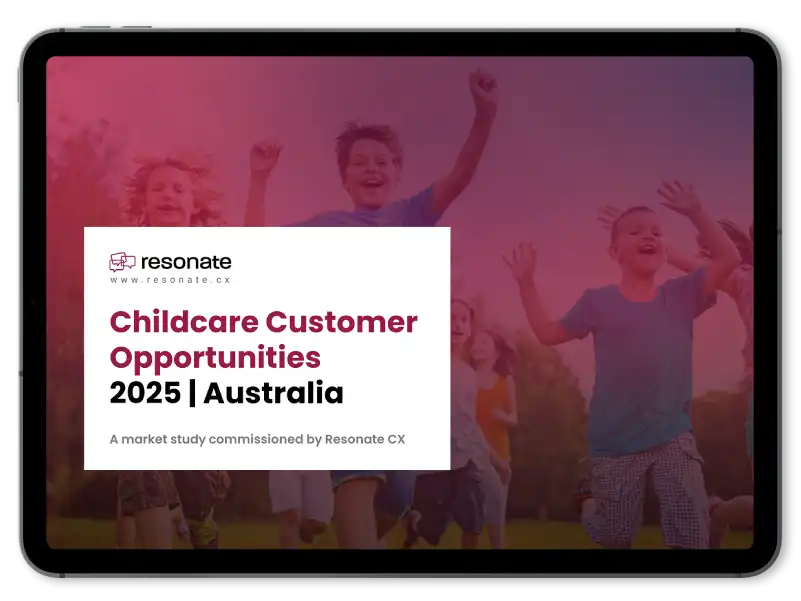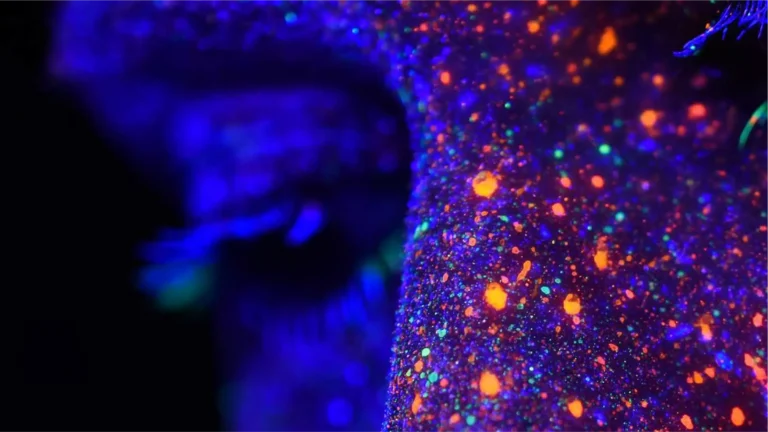Imagine you’re on a road trip. You’ve got your snacks, your playlist, and a destination. But instead of a map, you decide to wing it. Sounds adventurous, right? Except when you find yourself in the middle of nowhere, with no gas station in sight, and a growing suspicion that you might actually be on your way to another state entirely.
That’s a bit like running a business without customer journey mapping. You know where you want to go – more sales, happier customers – but without a map, you’re navigating in the dark. Let’s turn on the lights.
What is Customer Journey Mapping?
Customer journey mapping is the GPS for your business. It’s a strategic approach to understanding and documenting the path your customers take, from the first glimpse of your brand to the post-purchase glow (and ideally, beyond). This isn’t just about tracking clicks; it’s about empathy. It’s about getting into the passenger seat and seeing the trip through your customers’ eyes: their stops, starts, high points, and pain points.
Why is Customer Journey Mapping Important?
Here’s the scoop: businesses aren’t mind readers. Yet, understanding what your customer is thinking, feeling, and doing at each interaction with your brand is crucial. This is where customer journey mapping comes in. It’s not just about making a sale; it’s about crafting experiences that feel personal and seamless to your customers, guiding them smoothly from point A to point B.
In a world where your competitors are just a click away, being the brand that truly gets the customer can make all the difference. It’s about building relationships, not just transactions.
Benefits of Customer Journey Mapping
- Clarity Like Never Before: Suddenly, you see your business from a new perspective. You’ll identify gaps in the customer experience (CX) you never knew existed. It’s like finding a shortcut you never knew about on your road trip that saves you time and gets you ahead of traffic – in this case, the traffic is your competition.
- Personalized Experiences: When you know the road your existing customers are taking, you can personalize the billboards along the way. Tailor your marketing, sales, and support efforts to meet them where they are, with what they need according to their customer personas. This isn’t just nice for the customer; it’s smart business.
- Increased Efficiency: By mapping the customer journey, you pinpoint where you’re spending resources that don’t add value to the customer experience. It’s about optimizing the journey, not just for the customer expectations, but for your business as well.
- Boosted Conversions and Loyalty: This is the destination we’re all driving towards. A well-mapped customer journey leads to smoother roads for your customers and a happier bottom line for you. It’s about turning one-time buyers into lifelong roadies of your brand.
In the end, customer journey mapping is about putting yourself in your customers’ shoes (or in this case, their driver’s seat) and guiding them to where they want to go, with as few bumps as possible. It’s about being the kind of company that knows its customers so well, they feel like you’re reading their mind – no crickets, no tumbleweeds, just clear skies and open roads.
Understanding Customer Journey
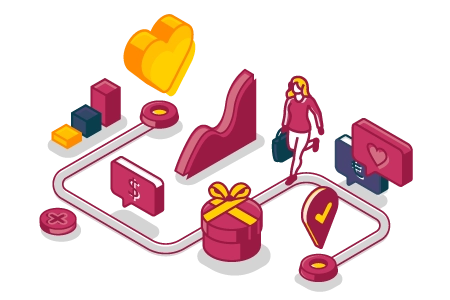
We’re diving deeper into the customer journey. It’s the road trip of a lifetime, from the first time they hear your brand name whispered in the wind, to the moment they become your number one fan, singing your praises from the rooftops. But what does this journey really look like, and why does it matter whether you’re in the B2B or B2C lane? Let’s break it down.
Definition and Components
The customer journey is the complete sum of experiences that customers go through when interacting with your brand. Imagine it as a highway with multiple stops – from spotting a billboard (awareness), to taking the exit ramp (purchase), and finally becoming a frequent visitor of that scenic route (loyalty). Each of these stops are stages, and the road signs along the way? Those are the touchpoints where they interact with your brand.
Stages of the Customer Journey
- Awareness: The “I think we’re lost” stage. Your customer realizes they have a need but aren’t sure where to turn. Your job? Be the well-placed, impossible-to-miss sign pointing in your direction.
- Consideration: Now, they’re checking the map, comparing routes. They know their options and are evaluating which one might be the best. Your role is to highlight why your path is the most scenic, the fastest, or simply the best value.
- Decision: Decision time. They’re ready to turn off the GPS and drive straight to your door. Make sure it’s a smooth turn.
- Retention: They’ve visited once, but will they come back? This is about making the trip so memorable they can’t wait to do it again.
- Advocacy: Now, they’re not just coming back; they’re bringing friends. They’re your brand’s road trip enthusiasts, ready to sing your praises to anyone who’ll listen.
B2B vs. B2C Customer Journeys
While both journeys head towards the same destination – customer satisfaction and loyalty – the route they take can look quite different.
- B2B journeys are the long hauls. They involve more checkpoints, as decisions often require consensus from multiple passengers (stakeholders). The road can be winding, with more need for reassurance and information at each turn.
- B2C journeys, on the other hand, can be more like a day trip. Decisions are often made quicker, with fewer people in the car. That doesn’t mean the journey is less complex, but the signposts might be more about emotional appeal than detailed specs.
The Importance of Understanding
Why map this journey at all? Because in today’s crowded marketplace, being the chosen route isn’t about chance. It’s about understanding every twist and turn from your customer’s perspective. It’s how you pave the road to make it as smooth and enjoyable as possible, removing any potholes that could send them down a detour.
Customer Journey Analytics
Enter the world of customer journey analytics, the high-powered binoculars that let you see your customer’s journey from a bird’s eye view. It’s about tracking, analyzing, and understanding the data from every touchpoint, giving you the insights needed to make the journey better. This isn’t just about collecting snapshots; it’s about creating a panoramic view of the customer experience, helping you to anticipate needs, tailor experiences, and ultimately, make sure every customer feels like they’re on the road trip of a lifetime.
Understanding the customer journey isn’t just about getting from A to B. It’s about ensuring every part of the trip is so fantastic, your customers can’t wait to do it all over again.
Understanding Customer Touchpoints
Alright, let’s shift gears and talk about customer touchpoints. Imagine you’re on that road trip we’ve been talking about, and every interaction you have along the way – from the friendly chat at a roadside diner to the ease of navigating the hotel’s late-night check-in – these are your touchpoints. In the world of business, customer touchpoints are every single point of contact between your brand and your customers, from the initial glance at your ad to the after-sales support chat.
Definition of Touchpoints
Touchpoints are the pit stops, the scenic overlooks, and the refreshment stands along your customer’s journey. They can be direct interactions like customer service calls, purchases, and emails. Or, they could be indirect, such as reading a review about your product or services or seeing a friend’s social media post about their experience with your brand. Every touchpoint is an opportunity to influence the customer’s perception and experience.
Importance of Touchpoints
Why obsess over these touchpoints? Because in the grand tour of the customer journey, these are the moments that matter. They’re the instances where you can turn a casual browser into a loyal customer, or, if handled poorly, where a potential advocate turns into a detour warning others to stay away. Each touchpoint is a chance to deliver value, build relationships, and reinforce why your route is the best one out there.
Identifying Customer Touchpoints
So, how do you map out these touchpoints to ensure your customers are getting the five-star tour? Here are some strategies:
- Walk in Your Customers’ Shoes: Start your engine and take the journey yourself. From discovery to post-purchase, experience your brand as a customer would. This hands-on approach helps you identify not just the touchpoints you know about, but also the unexpected ones you might overlook.
- Gather Feedback at Every Stage: Use surveys, feedback forms, and direct conversations to understand where your customers interact with your brand and how those moments feel for them. It’s like asking your road trip buddies, “Hey, what did you think of that last stop?”
- Analyze Your Data: Dive into your analytics to see where your customers are coming from, what pages they linger on, where they drop off, and how they move through your sales funnel. This data is like the map that shows you where the most scenic (and not so scenic) parts of your journey are.
- Map Out the Customer Journey: With your data and feedback in hand, chart out the customer journey, pinpointing each touchpoint along the way. This map becomes your guide to optimizing each interaction, making sure every touchpoint is not just a stop but a destination in itself.
- Keep an Eye on the Road Ahead: Customer journeys evolve, and so do their touchpoints. Regularly updating your map and staying alert to new trends and technologies ensures you’re always offering the best route possible.
By identifying and optimizing these crucial touchpoints, you’re not just hoping your customers enjoy the ride – you’re ensuring it. You’re turning what could be just another trip into an unforgettable journey, where each touchpoint is another reason your customer is glad they chose to travel with you.
Creating a Customer Journey Map
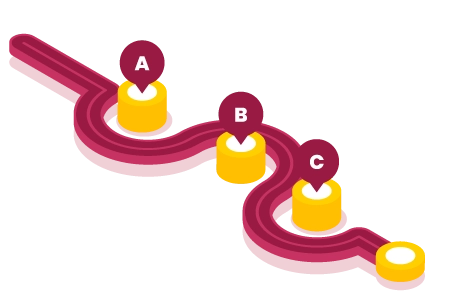
Now, let’s roll up our sleeves and get down to the nitty-gritty of creating your customer journey map. It’s like plotting the ultimate road trip, but instead of choosing between the scenic route and the fast track, we’re deciding how to blend traditional mapping methods with the horsepower of modern, data-driven approaches.
Approaches to Mapping
In the “good old days,” mapping the customer journey might have involved a lot of guesswork and a hefty dose of intuition, like navigating by the stars. Today, we’ve got GPS in the form of big data, analytics, and AI. The key is to combine the art of understanding human emotions and motivations with the science of data. Traditional methods give us the storyline, the qualitative insights into customer emotions and experiences. Modern, data-driven approaches supercharge this with quantitative data, revealing patterns, behaviors, and opportunities at scale. It’s about finding the perfect road trip playlist that has both your all-time favorites and the latest hits.
Steps to Create a Customer Journey Map
1. Define Your Buyer Persona or Customer Persona
Before you start mapping, you need to know who’s taking this journey. Creating a buyer persona is like drawing up the ideal road trip buddy. You need to know their preferences, their dislikes, what snacks they bring, and what music they like on the stereo. Dive into demographics, interests, behaviors, and any challenges they face. This isn’t about making assumptions; it’s about gathering real insights from customer interviews, surveys, and data analysis to build a comprehensive profile.
2. Identify the Stages
Every road trip has its phases, from the excitement of setting out to the satisfaction of reaching your destination. Break down your customer journey into clear stages: Awareness, Consideration, Decision, Retention, and Advocacy. Each of these stages represents a different mindset and set of needs your customer has as they progress towards their goal. Understanding these stages helps you map out the journey in a way that truly resonates with your audience.
3. Map Out Touchpoints
Now, plot every pit stop along the way – these are your touchpoints. For each stage of the customer journey, identify where your customer interacts with your brand. This could be through social media, your website, customer service calls, email newsletters, or even packaging. The goal is to document each touchpoint meticulously, understanding how it fits into the larger journey and what role it plays in moving the customer to the next stage.
4. Identify Improvement Opportunities
With your map in hand, you’re ready to spot where the road is smooth and where there might be potholes. Your customer journey map is a visual representation of how your customers engage with your business. Look for gaps in the journey, stages where customers seem to get lost, or touchpoints that could be more impactful. This is about turning insights into action. Maybe it’s enhancing your website’s user experience, offering more personalized customer service, or tweaking your follow-up emails after a purchase. Every improvement you identify is an opportunity to make the journey even more memorable and satisfying for your customers.
Creating a customer journey map is more than just a strategic exercise; it’s a commitment to understanding and improving every mile of your customer’s experience. It’s about ensuring that from the moment they set out, to the moment they reach their destination, and beyond, they’re delighted at every turn. So, grab your map and compass (and don’t forget the snacks) – it’s time to guide your customers on the journey of a lifetime.
Using Customer Journey Maps to Improve Customer Experience
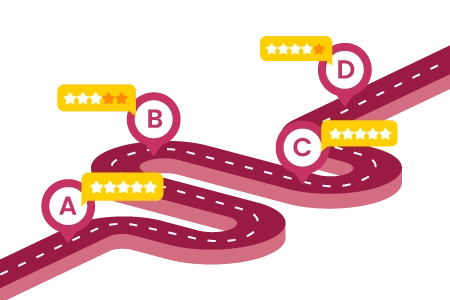
Alright, you’ve got your customer journey map spread out on the hood of your car, every stage and touchpoint marked. Now, it’s time to use that map to not just navigate but to pave new roads and smooth out any bumps along the way. This is where the real magic happens, turning insights into actions that turbocharge the customer experience.
Leveraging Maps for Improvement
Think of your customer journey map as a treasure map. It doesn’t just show you where you are; it highlights the X’s where treasure is buried. These treasures are the opportunities to elevate the customer experience. Here’s how you dig them up:
- Spot the Detours and Roadblocks: Look for points in the journey where customers seem to lose their way or hit a frustration point. Maybe it’s a confusing checkout process or a lack of information when they need it. Identifying these allows you to clear the path and keep them cruising smoothly towards their destination.
- Personalize the Journey: With your map, you can see exactly where and how to add those personal touches that make the experience memorable. Tailor your communications, offers, and support based on where your customers are in their journey and what they need to move forward.
- Align Your Team: Your map becomes a shared vision for everyone from marketing to sales to customer service. It ensures that no matter who’s at the wheel, the customer is getting a consistent, seamless experience that feels like one continuous journey, not a series of disconnected rides.
- Measure and Iterate: Use your map to set benchmarks and measure improvements in the customer experience. Then, keep iterating. The best journey maps are living documents, constantly updated with new insights, trends, and customer feedback. Doing so helps you increase better customer engagement and uncover ways to tap potential customers along the way.
Real-world Examples
As we venture into the realm of real-world examples, we move from theory to practice, showcasing the transformative power of customer journey mapping in action. These stories aren’t just tales of success; they’re blueprints for revolutionizing customer experience across various industries. Each case study highlights the strategic implementation of journey mapping, the challenges faced, and the innovative solutions that propelled businesses to new heights of customer satisfaction and loyalty.
For those eager to dive deeper into these narratives and explore more examples, we invite you to visit our resources and case study pages. There, you’ll find a treasure trove of insights, detailed analyses, and actionable strategies that have reshaped the customer journey landscape. Whether you’re looking to refine your approach or seeking inspiration to embark on your own journey mapping expedition, these resources are your gateway to unlocking the full potential of customer-centric innovation. Discover how leading companies have charted their course to success and how you can do the same.
Conclusion
And there we have it, the end of our epic road trip through the landscape of Customer Journey Mapping. From understanding the twists and turns of the customer journey, identifying each and every touchpoint, to finally using this detailed map to smooth out the ride and ensure an unforgettable experience for your customers, we’ve covered it all. This journey isn’t just about getting from point A to B; it’s about creating a journey so enjoyable and seamless that your customers can’t help but come back for more.
Now, it’s your turn. Take these insights, tools, and examples and embark on your own adventure. Lay out your customer journey map, identify the areas ripe for improvement, and start paving the way for a better, brighter customer experience. Remember, in the world of business, the road less traveled is the one that leads to innovation and lasting customer loyalty.
So, grab your map and compass; it’s time to chart a course to success. Let’s make every customer journey not just a trip, but an adventure worth remembering. Start mapping today, and transform the way you connect with your customers forever.

